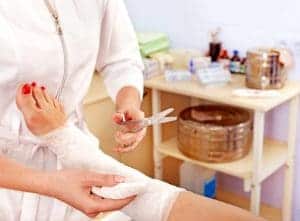
Tattoo Removal: Do’s & Don’ts

Tattoo Removal: Do’s
- Ice and elevate the area the night after Tattoo Removal treatment.
- Use antibacterial soap and warm water to clean the treated area three times a day for two weeks.
- Cover the treated area securely to avoid infection. Disinfect the area promptly if it is exposed to dirt or bacteria, until the area is completely healed.
- Treat the area gently until it is fully healed.
- Rub a VERY thin layer of Aquaphor on the area and apply a non-stick pad over it until the treated area is healed (this takes between three days to two weeks).
- Drink a gallon of water daily. This will help flush out the fragmented ink.
- After the area is completely healed, apply sunblock two times a day until your next appointment with a specialist.
- Keep the area covered and avoid sunlight for at least two weeks. Direct sunlight increases your risk of developing hypo- or hyper-pigmentation spots.
- If the area becomes itchy, apply cold compresses, benadryl and hydrocortisone cream.
- Allow any blisters to heal by themselves. If you develop blisters, cover them with a non-stick pad until they heal.
- Improve circulation in the healing area. Gently massage the area for 5 to 10 minutes daily. Engage in light physical activities. Take a walk to increase your circulation. This will kick your lymphatic system into overdrive, helping remove the fragmented ink.
Tattoo Aftercare: Don’ts
Doctor bandaging foot patient after tattoo removal Avoid any physical activities that may cause an increase in body temperature, sweating or a raised heart rate for at least 24 hours after treatment.
- Don’t participate in other activities that will increase your body temperature like sitting in a hot tub or sauna for 24 hours post-treatment.
- Don’t use the soap with scents or perfumes. These can irritate the skin and cause the healing to take longer.
- Do not forcefully spray the treated area with water from a hose or powerful shower.
- Don’t suffocate the skin with a thick layer of Aquaphor. By doing so, you risk infection and scarring. If scabs form, LEAVE THEM ALONE.
- Stay away from carbonated drinks, alcohol or smoking while healing. An excessive amount of any of these will slow down your body, delaying the healing and fading process.
- Avoid scratching or itching the treated area until it is 100% healed.
- Don’t scratch or pop the blisters! This will increase the possibility of infection and risk scarring.
- Don’t just sit around. Get your blood moving.
Is tattoo removal a painful process, and how is pain managed?
Tattoo removal can be a somewhat uncomfortable process, and pain perception varies among individuals. The primary method for managing pain during tattoo removal, especially with laser procedures, involves the use of topical anesthetics or numbing creams. Here are some considerations:
1. Topical Anesthetics: Before the tattoo removal session, a topical anesthetic or numbing cream is often applied to the tattooed area. This helps dull the sensation and make the procedure more tolerable.
2. Cooling Devices: Some tattoo removal devices incorporate cooling mechanisms to reduce discomfort during and after the procedure. These may include chilled air or a cooling gel applied to the skin.
3. Ice Packs: Applying ice packs to the treated area before and after the procedure may help minimize pain and reduce swelling.
4. Local Anesthetics (Injections): In certain cases, particularly for larger or more painful tattoos, a healthcare provider may use local anesthetic injections to numb the area. This is less common for standard laser tattoo removal but may be employed for more complex cases.
5. Pain Tolerance Varies: Pain perception is subjective, and individuals have different pain tolerances. Factors such as the location of the tattoo, size, and individual pain thresholds can influence the level of discomfort experienced.
Can all types of tattoos be completely removed?
While significant advancements have been made in tattoo removal technology, complete removal of all types of tattoos is not always guaranteed. Several factors influence the success of tattoo removal, including:
1. Ink Colors: Some ink colors are more challenging to remove than others. Dark colors like black are generally more responsive to removal, while lighter colors such as yellow and white can be more resistant.
2. Tattoo Age: Older tattoos may be easier to remove than newer ones. The breakdown of the ink over time can make it more susceptible to removal.
How To Prepare For Laser Tattoo Removal?
• Before coming in, we ask that you have freshly showered or bathed with perfectly clean skin, free of any lotions, oils, creams, or fragrances. If you have a lot of hair in the treatment region, you should shave it before getting started.
• For four weeks before treatment, avoid sun exposure to the treatment area and don’t use UV tanning beds at all. Self-tanning skin care products must be stopped two weeks before the treatment, and any remaining self-tanner must be removed before the procedure may be performed.
• For three days before treatment, avoid using any topical products that cause photosensitivity (e.g., hydroxyl acids, salicylic acid, retinols, and benzoyl peroxide) in the treatment regions. On the affected regions, use a light cleanser and lotion.
• Follow the directions we gave you at your medical laser consultation for all oral prescription drugs. Please notify our office if you are taking any new or changing drugs, including antibiotics, prior to your appointment.
Areas other than your foot or lower leg, Call Body Beautiful 724-987-3221

